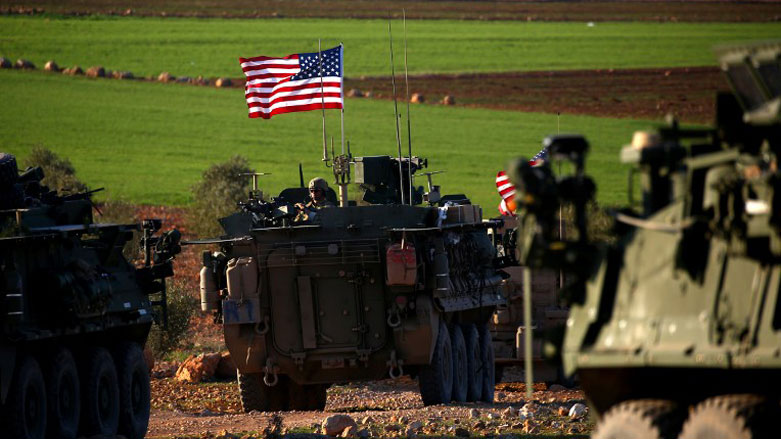Tensions rise between US and Syrian-Iranian-Backed forces around al-Tanf

WASHINGTON DC, United States (Kurdistan24) – Tensions are rising over the presence of forces associated with Damascus and Tehran that remain inside a US-designated “deconfliction zone,” despite repeated warnings to leave the area.
Deconfliction zones are part of an understanding between the US and Russia to allow their military forces to operate within Syria while avoiding accidental exchanges of fire.
The spokesperson for the US-led coalition against the Islamic State (IS), Col. Ryan Dillon, told Pentagon reporters by teleconference Thursday that a force loyal to the Syrian regime had entered a deconfliction zone surrounding a small base in eastern Syria where US and British forces train anti-IS fighters.
The al-Tanf camp, on the Syrian side opposite al-Walid on the Iraqi border, has major strategic significance, as it is the main crossing point on the Baghdad-Damascus highway.
Using Russia as an intermediary, the US has repeatedly told the force in question that it must leave the prohibited area. Over the weekend, US planes dropped some 90,000 leaflets, instructing them to do so. So far, the warnings have been ignored.

This problem first arose in early May when a large force appeared on the edge of the deconfliction zone, which encompasses a 55-kilometer (34 miles) radius around the camp.
Two units from that force proceeded to move inside the zone in mid-May. The movements were seen as threatening to US forces.
US warnings were ignored, and on May 18, US aircraft struck the more menacing of the two units, which included a tank which had begun to dig into position, a Pentagon spokesman explained to Kurdistan24.
The following day, Secretary of Defense James Mattis said the strike was necessitated due to the “offensive movement with offensive capability of what we believe were Iranian-directed forces."
He also said that it appeared the force had acted “against the advice of the Russians.”
The heightened US concern seems to be driven by the increased activity of the armed group on the perimeter, in conjunction with the continued presence of the small force in the proscribed area.
As Dillon explained, the force just outside the deconfliction zone continues to bring in manpower and equipment, including tanks and artillery.
Moreover, that force is expanding its patrols. Originally, northwest of al-Tanf, its patrols have now been extended to the north and east.
In 1983, Syria, in combination with Iran, bombed the barracks of the US Marines in Beirut, killing 241 US service members and inflicting on the Marines the largest death toll in a single day since World War II.
The current Pentagon leadership, of which several are Marines or retired Marines, including the Secretary of Defense, doubtlessly recall that painful incident acutely.
Dillon was uncertain as to the composition of the menacing forces, suggesting some reports indicated they are Lebanese Hizbollah while others pointed to Iraq.
The Shi’a media outlet AhlulBayt News Agency hinted that at least part of the menacing forces is Iraqi.
It claimed the US leaflets targeted Syrian army units, and that “the Hashd al-Shaabi is [currently] coordinating with the Syrian army to free al-Tanf border town and region.”
However, Dillon affirmed, “We have increased our combat power and are prepared for any threat,” raising the prospect that another clash may be in the offing.
Editing by G.H. Renaud
